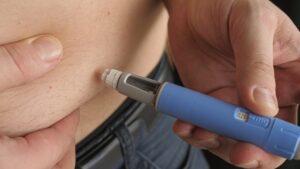A petition started by an anesthesiologist who, after undergoing fibroid surgery with morcellation was diagnosed with a dangerous Stage IV uterine cancer, has reached over 10,000 signatures on change.org. Dr. Amy Reed said she didn’t know she had cancerous tumors prior to surgery and was unaware of the potential risks of morcellation. Dr. Reed and her husband, Dr. Hooman Noorchashm, a cardiac surgeon, together launched the campaign for change.
FDA Warns Against Morcellation for Uterine Surgery
On April 17, 2014, the FDA released a statement discouraging the use of power morcellation during uterine surgery due to the risk of spreading undetected cancer. According to the Deputy Director for Science and the Chief Scientist at the FDA’s Center for Devices and Radiological Health, there is no “reliable way” for doctors to figure out if a uterine fibroid is cancerous before surgery.
Uterine fibroids are common among women. Fibroids can grow inside the uterine wall, outside the uterus, or in the inner cavity of the uterus. It’s unclear what the exact cause of fibroids is, but genetic changes, hormones, and some medications can trigger their development. Most women won’t need surgery to remove them. Women with fibroids may experience some of the following symptoms:
• Backache, leg pain
• Heavy menstrual bleeding
• Pelvic pressure, pain
• Longer menstrual periods (lasting more than 7 days)
• Constipation
• Frequent urination or trouble emptying your bladder
One way to remove uterine fibroids is through a process called power morcellation. This is a minimally invasive surgery to remove the uterus or uterine fibroids through very small incisions. It was touted as a way to improve recovery time, and reduce scars and bleeding.
The FDA found that 1 in 350 women who have to have a hysterectomy or myomectomy to remove uterine fibroids have a uterine sarcoma, which is an “unsuspected type of uterine cancer.” If power morcellation is performed on a woman who has a uterine sarcoma there is a chance that it will seed other cancers. The morcellator cuts up the tissue into tiny pieces to remove it, and may end up spreading cancerous tissue into other parts of the body.
The only way to tell if you have uterine fibroids is by going for a thorough physical examination. Your doctor will most likely perform an ultrasound, MRI, or use a type of dye or saline solution to highlight the uterine cavity during an x-ray.
If your doctor tells you that you need uterine surgery make sure you are informed. Discuss each and every option with your doctor before deciding which route will be best for you.

Exclusively focused on representing plaintiffs—especially in mass tort litigation—Roopal Luhana prides herself on providing unsurpassed professional legal services in pursuit of the specific goals of her clients and their families. While she handles complex cases nationwide on behalf of consumers, Ms. Luhana resides with her family in Brooklyn, New York.










Comments for this article are closed.